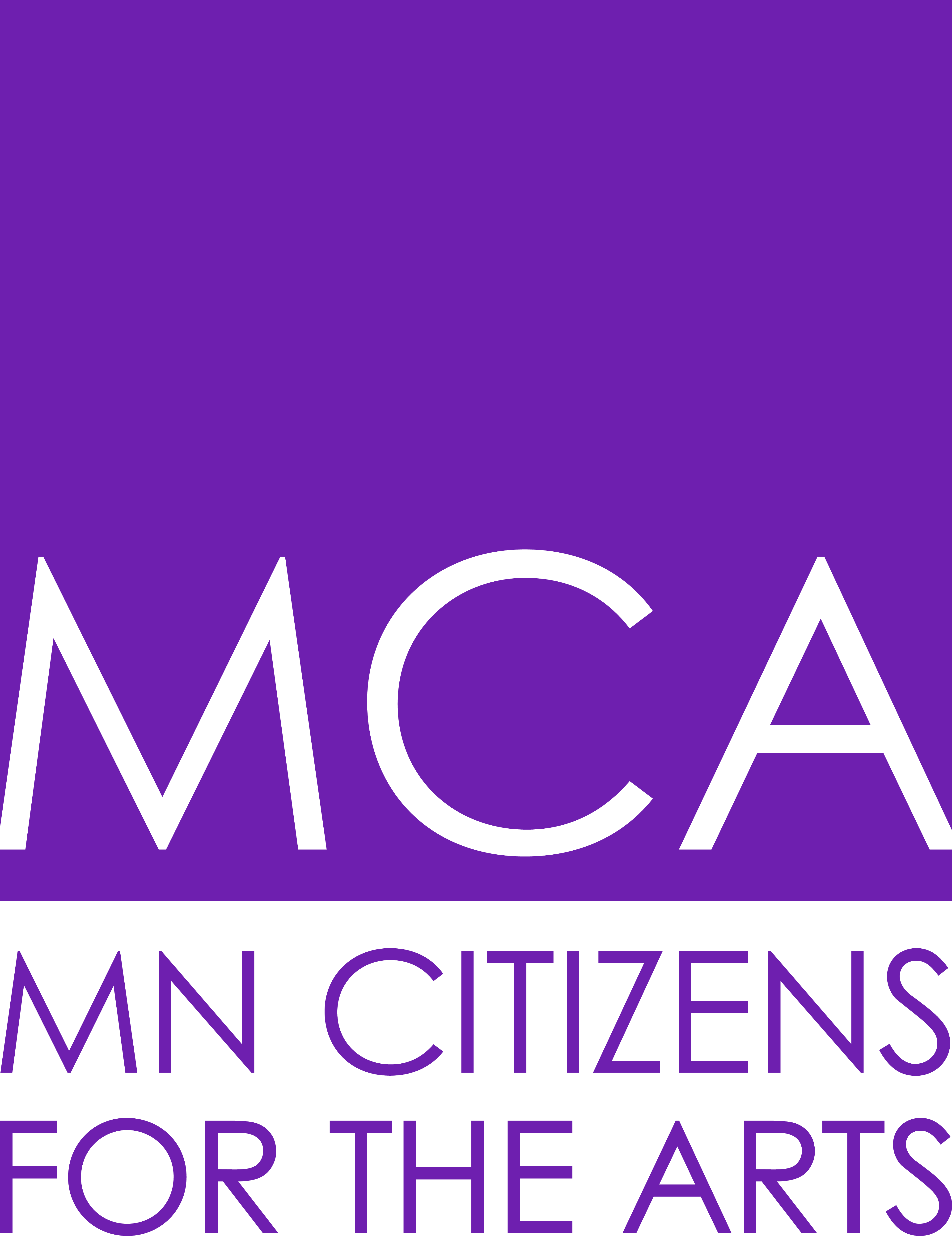GREAT NEWS:
**COVID RELIEF FOR NONPROFIT ARTS**
PASSED AT BOTH STATE
AND FEDERAL LEVELS
Contact Your County Commissioner Now About State Grant Support for Arts Nonprofits!
(National Support on Hold Due to Objections by Trump)
MINNESOTA STATE SUPPORT FOR ARTS NONPROFITS

Through the work of MCA lobbyist Larry Redmond, the Covid relief bill passed last week by the state legislature and signed by the Governor includes language that makes it clear that the relief that will be granted out by the state’s 87 counties should include:
“Nonprofits, nonprofit arts organizations, nonprofit museums, and nonprofit fitness centers that earn revenue similar to businesses, including but not limited to ticket sales and membership fees, are eligible for grants.”
Full requirements can be found here: https://mn.gov/deed/government/financial-assistance/relief/
Here's how much each county is getting for grants to nonprofits and businesses: https://mn.gov/deed/assets/County%20Relief%20Grants_tcm1045-460976.pdf
We recommend that you take these three steps to urge your county to use of these funds as intended, and then to track closely as they set up a process to grant the money so you can apply:
1. Identify your county commissioner district by using the MN Secretary of State pollfinder (You can find your district number in the box titled “Districts for this address” right below MN House): http://pollfinder.sos.state.mn.us/
2. Go to your county commissioner webpage and find your commissioner and contact information. MCA has created a website list for every county commissioner: http://artsmn.org/list-of-mn-county-commissioners/
3. Acting as an organization or individual, call/write an email to your County Commissioner asking them to remember to include grants for arts nonprofits as is stated in the original bill. Here are some talking points:
- "Please remember to include grant funding for arts nonprofits in our county as the Legislature intended."
- "Because they are in the business of bringing people together, arts organizations were the first to close and most likely will be the last to open due the ongoing pandemic and COVID restrictions." (You can get more facts about how Covid has affected the arts in MN here https://minnesotareformer.com/2020/08/14/minnesotas-vibrant-creative-community-is-in-crisis/). If you have a story about how Covid restrictions have affected your nonprofit, tell it!
- We all know that arts organizations are an economic driver in the county when open and right now they need your help to survive until their doors are able to open again. (For facts and figures about the arts in MN, check out www.Creative MN.org).
- I would also include the actual bill language: In lines 10.10-10.13:
FEDERAL COVID RELIEF AVAILABLE FOR ARTS NONPROFITS
F

irst off, THANK YOU toSen. Amy Klobuchar for championing Save our Stages and to Rep. Betty McCollumwho championed the increase in NEA funding. Below is a breakdown of the federal Covid relief bill provided by Americans for the Arts.

***Note that President Trump has brought the process to a screeching halt by making demands for changes in the bill that passed and refusing to sign it. He has asked Congress to reconvene on Monday and start over. Legally, the bill cannot merely be altered, as it was passed as written.
Here is what that process will look like
(thank you to Michael Strickland for the run-down):
- Congress meets Monday. They start with the same bill that was passed. They trim the items the President requested. These include all money for foreign nations or investments, as well as some domestic funds. They increase the stimulus checks to $2,000 per person as the President requested. They vote in both houses Monday. The President signs it Tuesday.
- The other path is that Congress does not comply with the President’s request. The President then can simply do nothing. The President has a lever working in his favor. This is called the Pocket Veto. Under the Constitution, the President has 10 days after a bill is placed on his desk to take action. He must either sign it or Veto it.
- If he Vetoes the bill, the Congress can override the Veto with a super majority vote, which they do have the votes to do. Thus, his Veto is meaningless. If, after 10 days, a bill is not signed, it becomes a law.
- If the bill were placed before the President today, there are only 9 working days left in this session of Congress. By law, if the President does nothing and the “clock runs out”, the bill is dead. As there are not 10 days left in this session, the President can simply do nothing, and by law the bill fails. Hence the name Pocket Veto. He puts it in his pocket, does nothing, and it dies. Congress will be out of session by law. They cannot override his Pocket Veto as they are not in session.
- There is no doubt that in January some version of the bill will again be passed and signed either by the current President or the incoming President. Net, we will get our relief at some point, as none of the items that effect Live Events are being questioned. The big question is when. Many of you need money now and simply cannot wait. There is nothing we can do. It is in the hands of the White House and the Congress now.
- I can assure you that there will be a relief bill passed that contains PPP, Enhanced Unemployment and Save Our Stages. The worst case for passage would be right after the Inauguration. Both houses of Congress overwhelmingly support the current bill, so it would pass as is.
It is unlikely anything will happen after today as everyone will go home for Christmas. They may return on Monday, this is yet to be seen. If they do not return, this will be taken up in the next session after January 3rd.
What’s in the bill now?
(Before any changes possibly pushed by Trump)
- $167.5 million for both the National Endowment for the Arts and National Endowment for the Humanities (a $5.25 million increase each from FY 2020 funding levels) and waiver language that allows FY 2021 grants to be expended for general operating support and allow uncompleted FY 2019 and 2020 previously awarded grants to also be expended for general operating support.
- $257 million for the Institute of Museum and Library Services (IMLS).
- $15 million additional to IMLS for a grant program to support American Latino Museums across the country.
- Authorization for the Smithsonian Institution to build and support two new museums on or near the National Mall in Washington, DC: The National Museum of the American Latino and a National Museum of Women’s History (formal name TBD).
- $475 million for the Corporation for Public Broadcasting.
- $30.5 million (an increase of $500,000) for the federal Arts In Education grant program.
Extensions of Pandemic Unemployment Benefits:
- For salaried/hourly workers, the Pandemic Emergency Unemployment Compensation (PEUC) program has been extended to April 5, 2021, once the applicant exhausts their state Unemployment Insurance (UI).
- All recipients of unemployment, including qualified self-employed gig works, will receive an extra $300/week in unemployment benefits for 11 weeks, beginning the week of December 27, 2020 to March 14, 2020. If a PUA recipient has not yet exhausted a full 50 weeks of unemployment benefits, they can continue receiving benefits until April 5th.
- “Mixed earners” with 1099/W2 income who were ineligible for PUA originally will now be eligible if they can show at least $5,000 in self-employment income in 2019. They will also receive a weekly bonus of $100 (a total of $400 extra weekly benefits) for the duration of their state UI/PEUC benefits.
- States are given the ability to waive collecting overpayments of unemployment in cases where the claimant is not at fault or if repayment would be contrary to equity and good conscience.
Pandemic Relief Package Highlights Include:
- Second round of IRS Direct Stimulus Checks at $600/person (phasing out after $75K AGI for single filers and $150K AGI for joint filers based on your 2019 tax return). Additional $600/child for eligible dependents. Treasury will process electronic deposits within 7 days of the President signing the bill.
- $284 billion for first and second draw of Paycheck Protection Program forgivable loans. No fee to apply.
- Eligibility: Remains available for Schedule C gig and self-employed workers, Nonprofits & Corporations with a maximum of 300 employees.
- Priority given to first time loan applicants, minority businesses, recipients with 10 or fewer employees, businesses located in low and moderate income neighborhoods
- Must has proven revenue loss of 25% or more in one of the four quarters in 2020 compared to the same quarter in 2019. Seasonal companies can pick a customized 12-week period.
- Maximum loan amount of $2 million.
- Destination marketing firms, news media companies, and 501(c)(6) nonprofit organizations are now eligible to apply.
- Must have been in business operation no later than February 15, 2020.
- Cannot also receive one of the new Shuttered Live Venue Grants
- Deadline to apply: March 31, 2021 (Treasury to release guidelines in early January.)
- No need to certify forgiveness of first loan before applying for second loan/draw.
- Covered Period: 8 to 24 weeks.
- Loan Amount: Avg monthly payroll x 2.5 months. Restaurants & Lodging can multiply by 3.5 months.
- Covered Expenses: Still must certify minimum of 60% for payroll & maximum of 40% for non-payroll.
- Covered Non-Payroll Cost Categories Expanded for New and Old PPP Loans:
- Operations costs for software and cloud servers for accounting, inventory, delivery, etc.
- Property damage costs related to vandalism due to public disturbances in 2020
- Supply costs of goods that were essential to the business and had pre-existing contracts
- Worker protection costs, both operating and capital costs needed to comply with CDC, HHS, OSHA, and/or local and state government health ordinances.
- Still includes the original non-payroll covered costs for rent, interest, and utilities.
- Covered Payroll Costs Expanded for New and Old PPP Loans to include group life, disability, vision, dental & health insurance
- A new one-page Forgiveness Application will be issued within 24 days of enactment to further simplify old and new PPP loans up to $150,000
- Tax Bonus applicable to Both New and Old PPP Loans:
- Forgiven PPP loans should not be included in the recipient’s gross income
- PPP funds used to pay for covered business expenses can still be fully tax deducted
- Eligibility: Remains available for Schedule C gig and self-employed workers, Nonprofits & Corporations with a maximum of 300 employees.
- $20 billion to replenish new Economic Industry Disaster Loans (EIDL) Advances through the Small Business Administration
- EIDL Advances would not be included in recipient’s taxable gross income
- Extends the Employee Retention Tax Credit through 7/1/2021
- $7 billion for Broadband Internet access across the country
- $82 billion for Education & expansion of Pell Grants
- CARES Act financial aid grants would not be included in a student’s taxable gross income
- $10 billion for Childcare Assistance
- Funds for speedy, equitable and free Vaccine Distribution
- Paid Sick and Family Leave Employer Tax Credit extended.
- $25 billion in Rental Assistance for individuals who lost their income due to the pandemic. Additionally, Eviction Protection would be extended to January 31, 2021.
- $13 billion for SNAP Food Assistance programs
- $82 billion for Education Financial Aid & expansion of Pell Grants; $10 billion for childcare
- $28 billion for speedy, equitable and free COVID-19 Vaccinations and distribution.
- $20 billion for states to expand COVID-19 Testing.
- Re-establishes the $300 above-the-line charitable tax deduction to now allow a $600 deduction for taxpayers filing jointly instead of limiting it to only $300 per tax return.
- While Economic Relief Block Grants for state, local and tribal governments are not included in this bill, there are several programs that will provide assistance, including costs for health, transportation, schools, testing.
New Program of Grants for Shuttered Live Venue Operations for live entertainment venues, cultural institutions, and agents
- $15 billion to support live entertainment venues, agents, cultural institutions such as theaters and museums with 500 or fewer FTE employees and cannot also apply for a new PPP loan.
- $2 billion of these funds are reserved for entities with 50 or fewer FTE employees.
- Initial grant can total up to $10 million per eligible business. A supplemental second grant, worth half the amount of the first, may also be available if funds are available.
- Grant amount based on 45% of recipient’s 2019 gross earned revenue.
- Priority in the first 14 days are given to those businesses who have faced 90% or more of losses of earned revenue between 4/1/20 to 12/31/20, compared to the same time period in 2019.
- Priority for the next 14 days are given to those companies who faced 70% or more of losses of earned revenue between 4/1/20 to 12/31/20, compared to the same time period in 2019.
- Special formula allowances available for seasonal businesses.
- 20% Funding reserve for applications after these two 14-day priority periods for the hardest hits companies.
- Funds can be used to cover all the same new covered costs of a PPP loan plus payments to independent contractors (not to exceed $100K annual pay), maintenance costs, licensing, insurance premiums, advertising, theatrical production costs, and capital expenditures incurred 3/1/20 to 12/31/21.
- Business entity must have been in operation on or before 1/1/19.
- Recipient would not include grant funds in their taxable gross income.
- Grant funds cannot be used to purchase real estate, pay loans taken out after 2/15/20, investment or re-lend, or for electoral activity and lobbying expenditures.
- Applications are made to the SBA and the SBA Administrator to issue guidance within 21 days of bill’s enactment.
- Specific definitions and formulas for eligibility can be found on page 2124 of the bill pdf.
 Facebook
Facebook Instagram
Instagram YouTube
YouTube Twitter
Twitter Home Page
Home Page